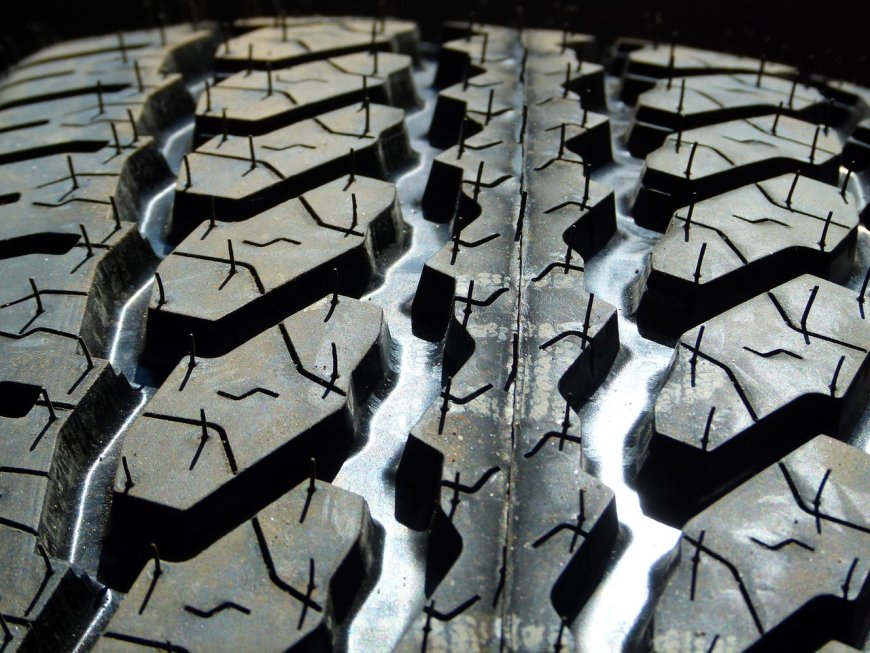Mastering the Grip: Essential Traction Tips for Pickup Owners

Pickup trucks are renowned for their versatility and capability, but harnessing all that power effectively often comes down to one crucial factor: traction. Whether you're navigating challenging off-road trails, hauling heavy loads, or simply driving in inclement weather, maintaining optimal grip is key to safety, control, and performance.
This guide delves into practical and effective traction tips every pickup owner should know, ensuring your truck remains sure-footed no matter the conditions.
Understanding Traction: More Than Just Tires
Before diving into specific tips, it’s important to understand what influences traction. It’s a complex interplay of several factors, including:
- Tire Design and Condition: The tread pattern, rubber compound, and inflation pressure are paramount.
- Weight Distribution: How your truck's weight is distributed significantly impacts the grip on each tire.
- Road Surface: Different surfaces (pavement, gravel, mud, snow, ice) offer varying levels of friction.
- Driving Habits: Aggressive acceleration, braking, and steering can easily break traction.
- Vehicle Systems: Features like 4-wheel drive (4WD), all-wheel drive (AWD), traction control, and limited-slip differentials play a vital role.
Essential Traction Tips for Pickup Owners
Here are actionable tips to improve your pickup's traction:
1. Invest in the Right Tires
This is perhaps the most critical factor.
- All-Terrain (A/T) Tires: A great all-rounder for pickups, offering a balance of on-road comfort and off-road capability. Their aggressive tread blocks provide better grip on loose surfaces.
- Mud-Terrain (M/T) Tires: If you frequently venture into serious off-road conditions with mud, rocks, and uneven terrain, M/T tires offer maximum traction with their large, widely spaced tread lugs. Be aware they can be noisier and wear faster on pavement.
- Winter/Snow Tires: For regions with consistent snow and ice, dedicated winter tires are a game-changer. Their specialized rubber compounds remain flexible in cold temperatures, and unique siping patterns bite into snow and ice far better than all-season or all-terrain tires.
- Proper Tire Pressure: Always maintain the manufacturer-recommended tire pressure. Under-inflated tires can lead to poor handling and increased wear, while over-inflated tires reduce the contact patch, negatively impacting traction.
2. Master Tire Pressure Adjustments (When Appropriate)
While sticking to recommended pressure is crucial for daily driving, there are specific scenarios where temporary adjustments can aid traction:
- Off-Roading (Carefully!): Slightly deflating tires (e.g., from 35 psi to 15-20 psi) on soft surfaces like sand or rocks can increase the tire's contact patch, distributing weight over a larger area and providing more grip. Always re-inflate to recommended pressure immediately after returning to paved roads to prevent damage and ensure safety.
- Heavy Loads: When hauling significant weight, slightly increasing tire pressure (within the tire's maximum limits and manufacturer guidelines) can help maintain tire shape and prevent excessive sidewall flex, improving stability and potentially traction.
3. Utilize Your Truck's 4WD/AWD System Effectively
Modern pickups often come equipped with advanced 4x4 systems. Understand when and how to use them:
- 4-High (4H): Suitable for slippery conditions on paved or unpaved roads (snow, ice, light mud, gravel) where speeds are relatively higher. Do not use 4H on dry, high-traction pavement as it can cause drivetrain binding.
- 4-Low (4L): Designed for extreme low-speed traction in challenging off-road situations (steep inclines, deep mud, rock crawling). It provides maximum torque multiplication. Use only at very low speeds.
- Automatic 4WD/AWD: Some systems can automatically engage 4WD when slip is detected, offering convenience and improved safety in varying conditions.
4. Strategic Weight Management
Adding weight to your truck bed, especially over the rear axle, can significantly improve traction, particularly in two-wheel drive (2WD) pickups or when driving in slippery conditions:
- Winter Driving: Placing sandbags, concrete blocks, or specialized weight bags over the rear axle (e.g., ahead of the rear wheels) can increase the downward force on the drive wheels, enhancing grip on snow and ice.
- Hauling: When hauling, ensure the load is distributed evenly and as far forward as safely possible to maintain balance and optimal weight over the rear wheels.
5. Drive Smarter, Not Harder
Your driving style plays a massive role in maintaining traction.
- Smooth Inputs: Avoid sudden acceleration, hard braking, or jerky steering. Gentle and gradual inputs are key to preventing wheelspin or skidding.
- Anticipate Conditions: Look far ahead to identify potential traction hazards (puddles, ice patches, gravel).
- Lower Speeds: Reduce your speed in adverse conditions. Slower speeds give your tires more time to find grip and allow for quicker reactions.
- Engine Braking: In slippery downhill conditions, use a lower gear to allow engine braking to help control your speed and reduce reliance on the brakes, which can cause skidding.
6. Consider Traction Aids
For extreme situations, dedicated traction aids can be invaluable:
- Traction Boards/Recovery Tracks: These are durable, often plastic, boards with aggressive treads that can be wedged under spinning tires to provide a path to grip on sand, mud, or snow.
- Snow Chains: In severe snow and ice, chains wrapped around your tires offer superior grip. Check local regulations regarding their use.
- Winch: For serious off-roading, a winch can pull your truck out of very challenging stuck situations where traction is completely lost.
Conclusion: Confidence Through Grip
Optimizing your pickup's traction is an ongoing process that involves smart choices in equipment, careful driving habits, and an understanding of your vehicle's capabilities. By implementing these tips, you'll not only enhance your truck's performance but also significantly boost your confidence and safety on any journey. Remember, a pickup with good traction is a pickup ready for anything.






































































![https //g.co/recover for help [1-866-719-1006]](https://newsquo.com/uploads/images/202506/image_430x256_684949454da3e.jpg)




























![[PATREON EXCLUSIVE] The Power of No: How to Say It, Mean It, and Lead with It](https://tpgblog.com/wp-content/uploads/2025/06/just-say-no.jpg?#)
























































